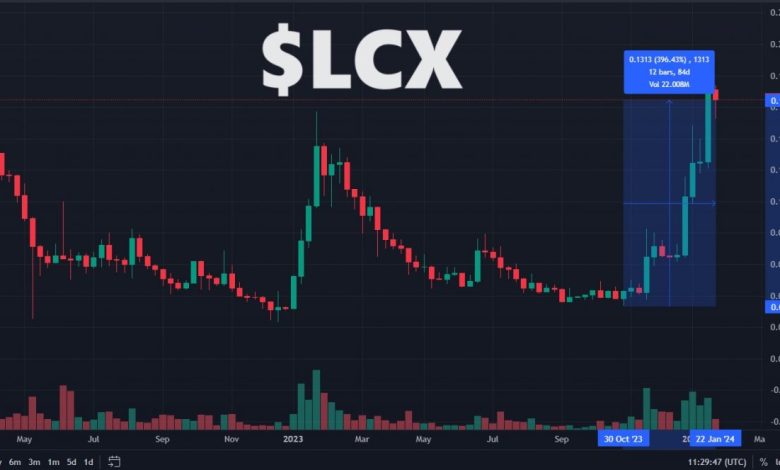How to Use On-Chain Metrics for Token Analysis

- Understanding the importance of on-chain metrics in token analysis
- Key on-chain metrics to consider when evaluating a token
- How to interpret on-chain data for better investment decisions
- Using on-chain metrics to identify market trends and patterns
- Common pitfalls to avoid when analyzing on-chain data
- Tips for incorporating on-chain metrics into your trading strategy
Understanding the importance of on-chain metrics in token analysis
Understanding the significance of on-chain metrics in token analysis is crucial for investors looking to make informed decisions in the cryptocurrency market. On-chain metrics provide valuable insights into the behavior of tokens on the blockchain, allowing investors to assess the health and potential of a project. By analyzing on-chain data, investors can gain a deeper understanding of token circulation, transaction volume, and network activity.
On-chain metrics can help investors identify trends, detect anomalies, and make predictions about the future performance of a token. By tracking metrics such as active addresses, transaction volume, and token velocity, investors can gauge the level of interest and engagement in a project. This information can be used to assess the overall demand for a token and its potential for growth.
Furthermore, on-chain metrics can provide insights into the level of decentralization and security of a blockchain network. By analyzing metrics such as miner concentration, distribution of token holdings, and network activity, investors can evaluate the robustness and resilience of a project. This information can help investors assess the long-term viability and sustainability of a token.
In conclusion, on-chain metrics play a vital role in token analysis by providing investors with valuable data and insights into the health and potential of a project. By understanding and utilizing on-chain metrics effectively, investors can make more informed decisions and navigate the cryptocurrency market with greater confidence.
Key on-chain metrics to consider when evaluating a token
When evaluating a token, it is crucial to consider key on-chain metrics that can provide valuable insights into its performance and potential. These metrics offer a glimpse into the token’s network activity, user adoption, and overall health. By analyzing these metrics, investors can make more informed decisions about whether to buy, hold, or sell a particular token.
- Transaction Volume: One of the most important on-chain metrics to consider is transaction volume. This metric measures the total value of transactions that occur on the token’s network over a specific period. High transaction volume can indicate strong network activity and user engagement, which may be a positive sign for the token’s value.
- Active Addresses: Another key metric to evaluate is the number of active addresses on the token’s network. Active addresses represent the number of unique addresses that are involved in transactions within a given timeframe. A growing number of active addresses can suggest increasing user adoption and network usage.
- Token Circulation: Token circulation refers to the amount of the token that is actively circulating in the market. By analyzing token circulation, investors can gain insights into the token’s liquidity and scarcity. A healthy balance between circulating supply and demand can contribute to price stability and growth.
- Token Velocity: Token velocity measures the rate at which tokens are being spent or moved within the network. High token velocity can indicate a high level of token turnover, which may impact the token’s value and long-term sustainability. Understanding token velocity can help investors assess the token’s utility and potential for growth.
- Network Hash Rate: For blockchain-based tokens, network hash rate is a critical metric to consider. Hash rate represents the computing power that miners contribute to secure the network and validate transactions. A strong network hash rate can indicate network security and decentralization, which are essential factors for the token’s reliability and trustworthiness.
How to interpret on-chain data for better investment decisions
When it comes to making informed investment decisions in the cryptocurrency market, analyzing on-chain data can provide valuable insights. By examining metrics such as transaction volume, wallet activity, and token circulation, investors can gain a better understanding of the health and potential growth of a particular token.
One key metric to consider is transaction volume, which can indicate the level of activity and interest in a token. High transaction volume may suggest strong demand and liquidity, while low volume could signal a lack of interest or potential price volatility.
Wallet activity is another important on-chain metric to evaluate. By tracking the number of active wallets holding a token, investors can gauge the level of participation and engagement within the token’s community. A growing number of active wallets may indicate increasing adoption and network usage.
Token circulation is also a crucial factor to consider when analyzing on-chain data. By monitoring the supply of tokens in circulation and any changes in distribution, investors can assess the potential impact on price dynamics and market sentiment. A decreasing token supply could lead to scarcity and price appreciation, while an increasing supply may put downward pressure on prices.
Overall, interpreting on-chain data can provide valuable insights for making more informed investment decisions in the cryptocurrency market. By analyzing metrics such as transaction volume, wallet activity, and token circulation, investors can gain a better understanding of market trends and potential opportunities for growth.
Using on-chain metrics to identify market trends and patterns
Utilizing on-chain metrics is a powerful tool for analyzing market trends and patterns in the world of cryptocurrency. By examining data directly from the blockchain, investors can gain valuable insights into the behavior of tokens and make more informed decisions.
One key metric to consider is the transaction volume, which can indicate the level of activity surrounding a particular token. High transaction volume may suggest increased interest and demand, while low volume could signal a lack of interest or potential price volatility.
Another important metric is the number of active addresses, which can provide insight into the level of user engagement with a token. An increase in active addresses may indicate growing adoption and usage, while a decrease could suggest waning interest or potential sell-offs.
Additionally, monitoring the token’s velocity can help investors understand how quickly it is changing hands. A high velocity may indicate short-term trading or speculation, while a low velocity could suggest long-term holding or accumulation.
By analyzing these on-chain metrics and identifying market trends and patterns, investors can make more informed decisions about when to buy, sell, or hold a particular token. This data-driven approach can help mitigate risks and maximize potential returns in the volatile world of cryptocurrency trading.
Common pitfalls to avoid when analyzing on-chain data
When analyzing on-chain data for token analysis, there are several common pitfalls that you should avoid to ensure accurate and reliable results. By being aware of these potential pitfalls, you can make more informed decisions based on the data you are analyzing.
- 1. **Ignoring** the context of the data: It is essential to consider the broader context in which the on-chain data is collected. Without understanding the factors influencing the data, you may misinterpret the results.
- 2. **Relying** solely on one metric: While on-chain metrics can provide valuable insights, it is crucial not to rely solely on one metric. By considering multiple metrics, you can gain a more comprehensive understanding of the token’s performance.
- 3. **Failing** to account for external factors: External factors such as market conditions, regulatory changes, or technological developments can impact on-chain data. Failing to consider these factors can lead to inaccurate conclusions.
- 4. **Overlooking** data quality issues: On-chain data can be subject to errors or manipulation. It is essential to verify the quality and integrity of the data before making any decisions based on it.
- 5. **Misinterpreting** correlation as causation: Just because two metrics are correlated does not mean that one causes the other. It is crucial to avoid making assumptions about causation based on correlation alone.
By avoiding these common pitfalls when analyzing on-chain data, you can ensure that your token analysis is more accurate and reliable. Taking the time to carefully consider the context, use multiple metrics, account for external factors, verify data quality, and avoid misinterpreting correlation as causation will help you make better-informed decisions based on on-chain data.
Tips for incorporating on-chain metrics into your trading strategy
When it comes to incorporating on-chain metrics into your trading strategy, there are several tips to keep in mind. These metrics can provide valuable insights into the health and potential of a token, helping you make more informed trading decisions. Here are some tips to help you effectively utilize on-chain metrics in your trading strategy:
- **Understand the metrics:** Before incorporating on-chain metrics into your trading strategy, take the time to understand what each metric measures and how it can be used to evaluate a token’s performance.
- **Diversify your metrics:** Don’t rely on just one on-chain metric to inform your trading decisions. Instead, consider using a combination of metrics to get a more comprehensive view of a token’s health.
- **Monitor trends:** Keep an eye on how on-chain metrics for a particular token change over time. By monitoring trends, you can identify potential opportunities or risks before they become apparent.
- **Compare metrics:** Compare on-chain metrics for different tokens within the same sector or industry to identify outliers or tokens that may be undervalued.
- **Stay informed:** Stay up to date on the latest developments in on-chain metrics and how they are being used in the crypto space. This will help you stay ahead of the curve and make more informed trading decisions.
By following these tips, you can effectively incorporate on-chain metrics into your trading strategy and improve your overall trading performance.




